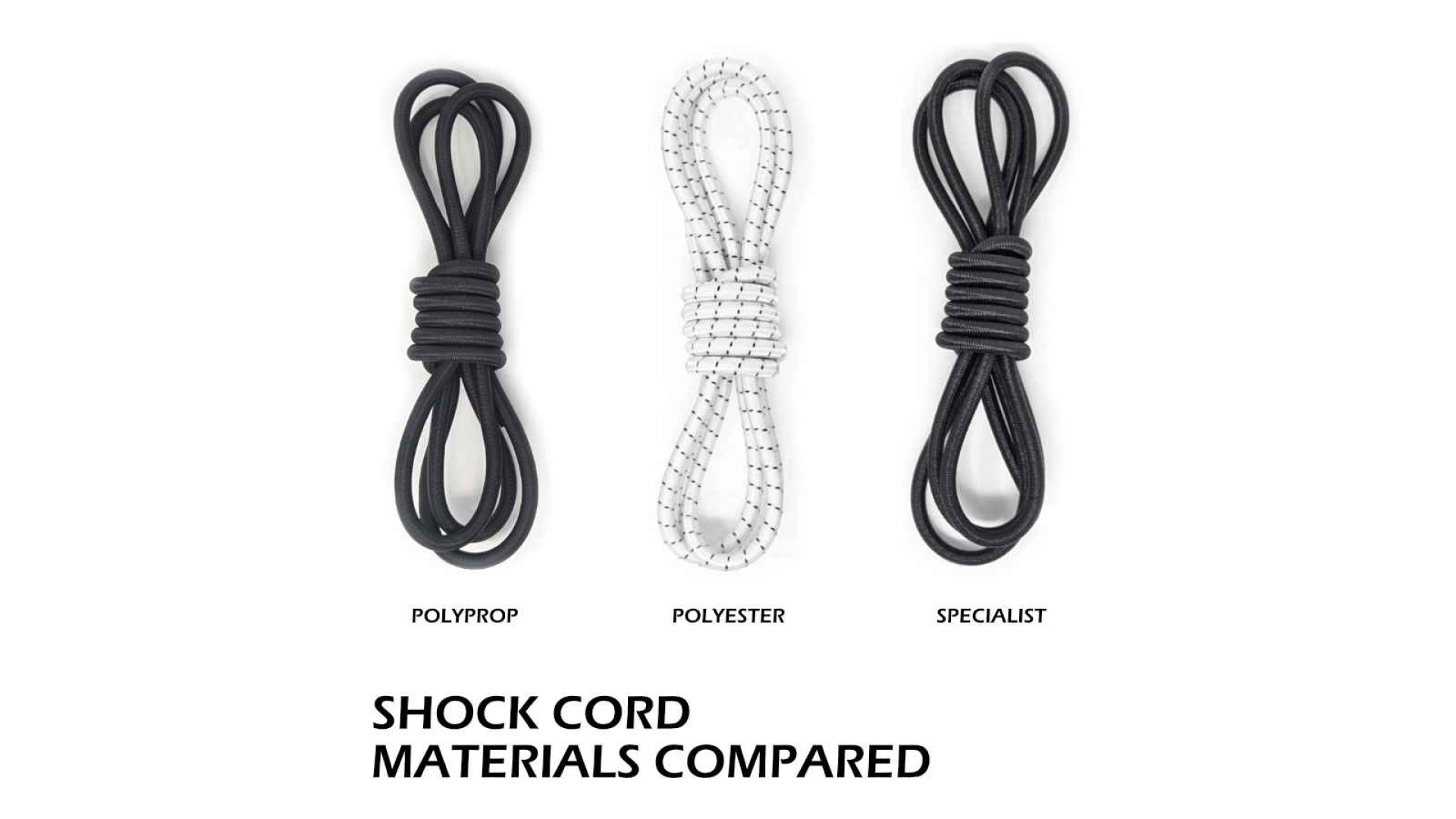A versatile, elasticated rope utilised by many!
Sock Cord is used across the globe in a wide array of industries—from transport and marine to outdoor gear and industrial applications. While the core (natural or synthetic rubber) gives the shock cord its stretch, the braided outer sheath determines how it performs in the real world: how it handles abrasion, UV exposure, chemicals, and environmental conditions.
Here’s a breakdown of the most common braid materials and their characteristics, to help you specify the right shock cord for your application.
Polyester-Braided Shock Cord
Most commonly used in applications where the cord will be exposed to extreme conditions, perfect for marine based usage.
- Abrasion Resistance: Excellent, making it suitable for repeated handling or contact with hardware.
- UV Resistance: Very good—polyester is inherently UV resistant, paired with the U.V. agents added to the rubber this is a solid choice that will holds up well under sun exposure.
- Moisture Resistance: Low water absorption; dries quickly and resists rot/mildew.
- Temperature Stability: Performs consistently in both hot and cold environments.
Typical Applications include retention of sails and storage of accessories, use with truck and trailers, awnings and tents even with winter covers for swimming pools, hail protection nets and oyster crates to name a few.
✅ Best for: Long-term outdoor use, high-friction environments, general industrial applications.
Polypropylene-Braided Shock Cord
Designed to fulfil any job - Our polypropylene Monoflex® Shock Cord is our best all-rounder.
- Abrasion Resistance: Lower than polyester—more prone to wear over time.
- UV Resistance: Fair—but will degrade faster than polyester with prolonged sun exposure.
- Moisture Resistance: Excellent—doesn’t absorb water and is fully buoyant.
- Weight: Lighter than polyester.
✅ Best for: Indoor or light-duty outdoor use, short-term applications, where weight and cost are priorities.
Specialist Options
For demanding environments or niche applications, specialist braids are available:
Nylon-Braided Shock Cord
- Pros: High strength, superior elasticity, excellent shock absorption
- Cons: Absorbs water and may lose strength when wet; more expensive.
- Use: Parachute cords, aerospace, kinetic energy dampening.
Cotton or Natural-Fiber Braid
- Pros: Non-synthetic look and feel, biodegradable, low static.
- Cons: Not as durable or weather-resistant.
- Use: Vintage restoration, theatre rigging, decorative/period-accurate applications.
Contact us for any specialist requirements.
Choosing the Right Shock Cord
When specifying shock cord, consider:
- Exposure: Will it be used outdoors? In saltwater? In high-heat environments?
- Abrasion: Will it rub against hard surfaces or pass through pulleys?
- Budget: Are you looking for long-term performance or temporary use?
- Aesthetic: Is appearance important (e.g., visible rigging or display use)?

